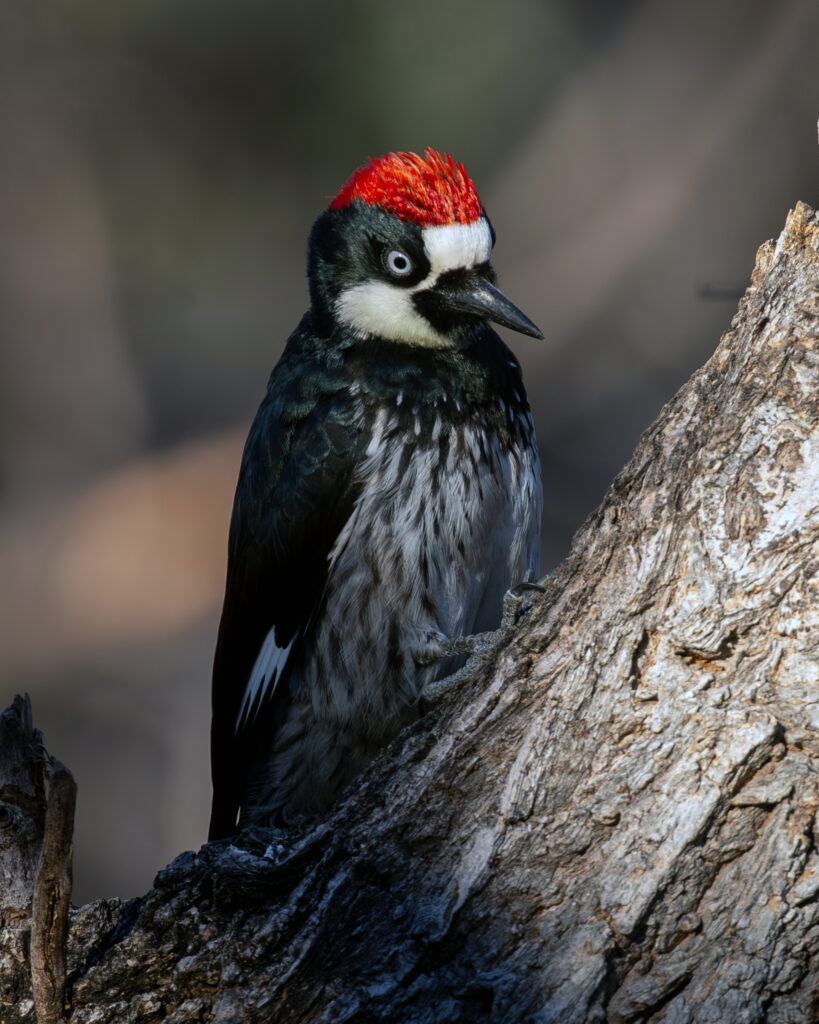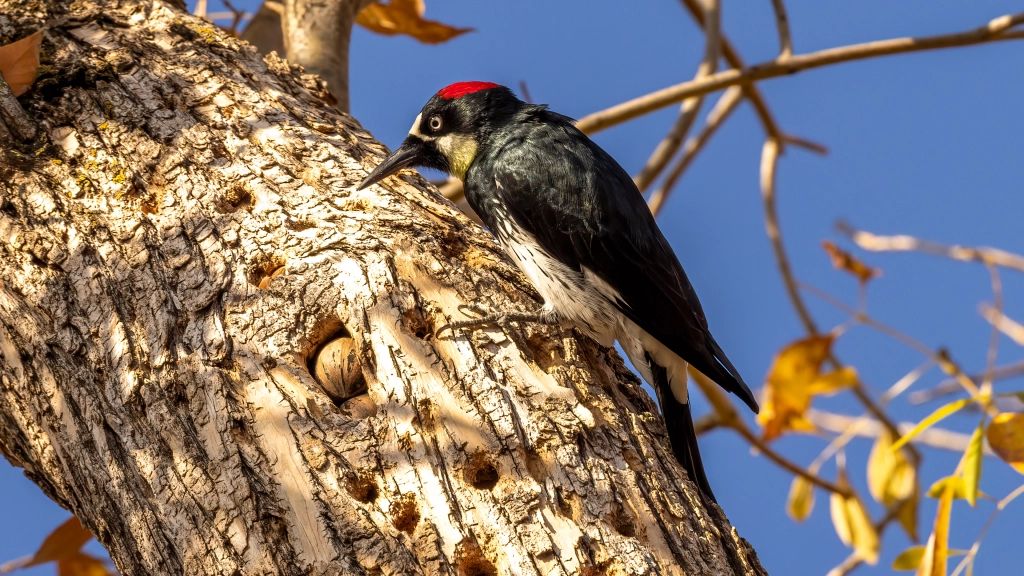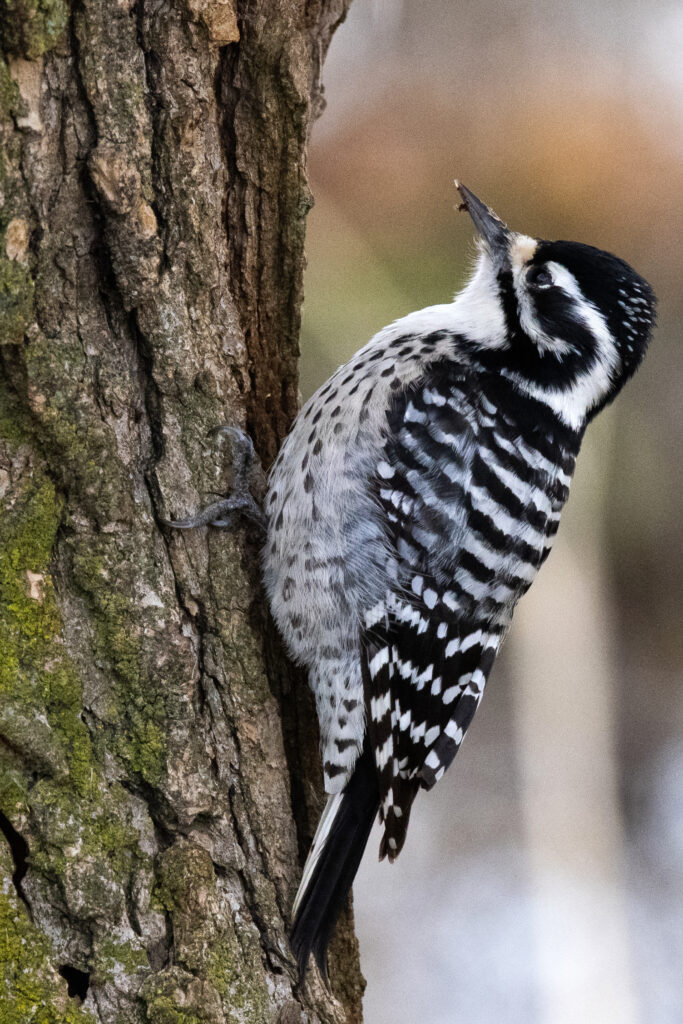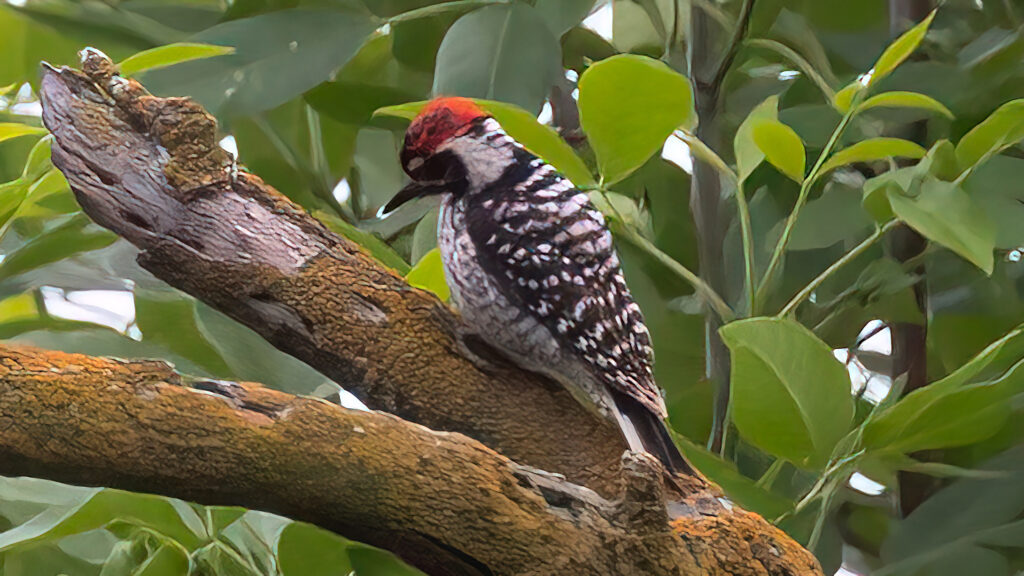We’re proud to publish Jim Gain’s “Learn 100 Common Valley Birds” series. Jim’s concise texts and spectacular photos may be the quickest and best way to learn the common birds around us. Below, find a “double dip” into local woodpeckers. ed.
Few things on earth fill us with as much delight as birds, and knowing them by name only adds to our pleasure. In California’s San Joaquin Valley, with only a little bit of effort, anyone can learn 100 local bird species. On a daily basis, Valley residents come in contact with at least a dozen species that most recognize but may not know the name of. Learning the names of these and other birds adds greatly to the enjoyment of the Valley’s natural bounty. The intent of this series is for followers to learn about and be able to identify 100 common Valley birds. A Reflections of the Natural World Blog Post Series by Jim Gain
Acorn Woodpecker #34 In “Learn 100 Valley Birds” (Species 54/100)

Acorn Woodpecker – Melanerpes formicivorus
Name roots: (E. acorn, its favorite food) (Gr. Melos, “black”Gr. Herpes, “a creeper”;
L. formica, “an ant”,L. voro, “to devour” )
Physical Characteristics
The Acorn Woodpecker is a medium-sized woodpecker with a straight, spike-like bill and a stiff, wedge-shaped tail used for support as the bird clings to tree trunks. It has a red-crowned, glossy black and white head, white eyes, and white rump and wing patches.

One interesting fact about the Acorn Woodpecker is that it lives in large groups in western oak woodlands and stores thousands of acorns each year by jamming them into specially made holes in trees. This behavior is known as hoarding and the tree where the acorns are stored is called a granary tree.
Distribution Status in the San Joaquin Valley
The Acorn Woodpecker is a common year round resident in the Valley and can be found in almost any area with oak trees.
II
Nuttall’s Woodpecker #35 in “Learn 100 Common Valley Birds (Species 55/100)

Nuttall’s Woodpecker – Dryobates nuttallii
Name Roots: L. dryo, “a tree”; L. bates, “loves” – for Thomas Nuttall (1786-1859) English botanist, ornithologist
Physical Characteristics
Nuttall’s Woodpecker is a small woodpecker, slightly larger than a Downy Woodpecker but smaller than an Acorn Woodpecker. It has black wings and tail feathers with white barring, and its ventral surface is white with black spots and barring. The forehead is black with white streaks on the sides. Adult males have a distinguishable red crown which females do not have, however, this physical feature is present in the juvenile of both sexes. They have zygodactyl feet and stiff tail feathers which allow them to maintain a vertical position on trees; typical of woodpeckers.

One interesting fact about the Nuttall’s Woodpecker is that it is a non-migratory bird that maintains year-round territories. Males and females spend no time together in late summer, and most of their time together in early spring. Male Nuttall’s Woodpeckers do the nest cavity excavation, and create a new cavity for each breeding season.
Distribution Status in the Valley
The Nuttall’s Woodpecker is a common year round resident in the Valley and can be found in almost any area with trees.


I have not had the privilege of seeing a Nuttall’s Woodpecker, until viewing Jim Gain’s artisan photos. I am not getting outside enough, near trees. To discover the Nuttall’s are a common year round resident, reveals to me just how much I have been depriving myself of natural woodsy settings. I have no excuse.
Thank you, Jim. You certainly have an eye for beauty in all it’s shapes and colors.